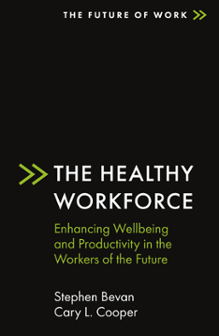
Index
ISBN: 978-1-83867-502-8, eISBN: 978-1-83867-499-1
Publication date: 15 November 2021
Citation
Bevan, S. and Cooper, C.L. (2021), "Index", The Healthy Workforce (The Future of Work), Emerald Publishing Limited, Leeds, pp. 223-228. https://doi.org/10.1108/978-1-83867-499-120211010
Publisher
:Emerald Publishing Limited
Copyright © 2022 by Emerald Publishing Limited
INDEX
- Prelims
- 1 Why Worker Health and Productivity Matter
- 2 How Health Affects Productivity
- 3 Health and Work in a Pandemic
- 4 Is Your Manager Bad for Your Health?
- 5 Productivity at Work: The Role of Healthcare Professionals
- 6 Workplace Health Interventions to Improve Productivity
- 7 Rethinking Workforce Health as an Asset
- 8 A Road Map to Better Worker Health
- Index